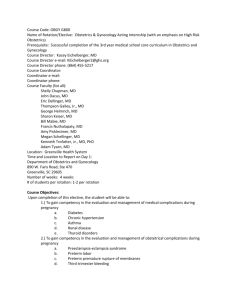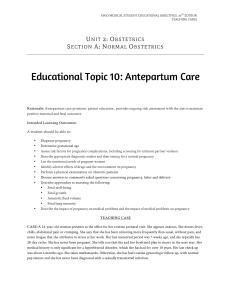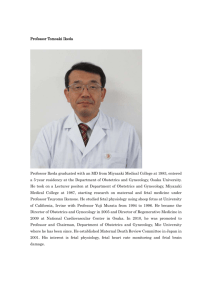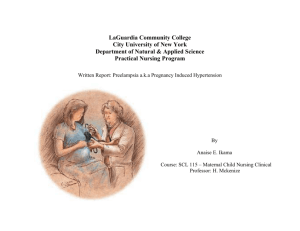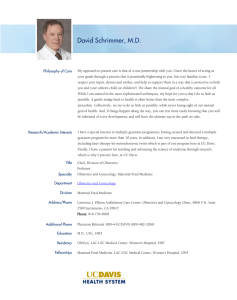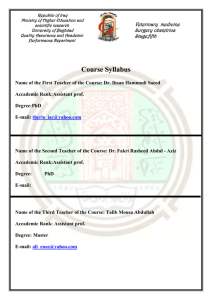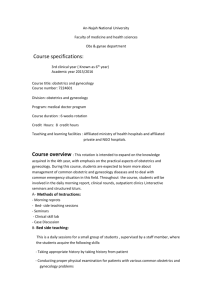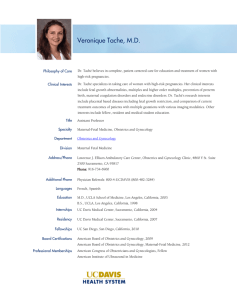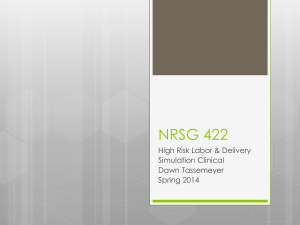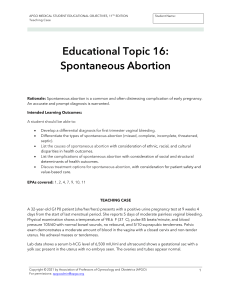Educational Topic 18: Preeclampsia-Eclampsia
advertisement
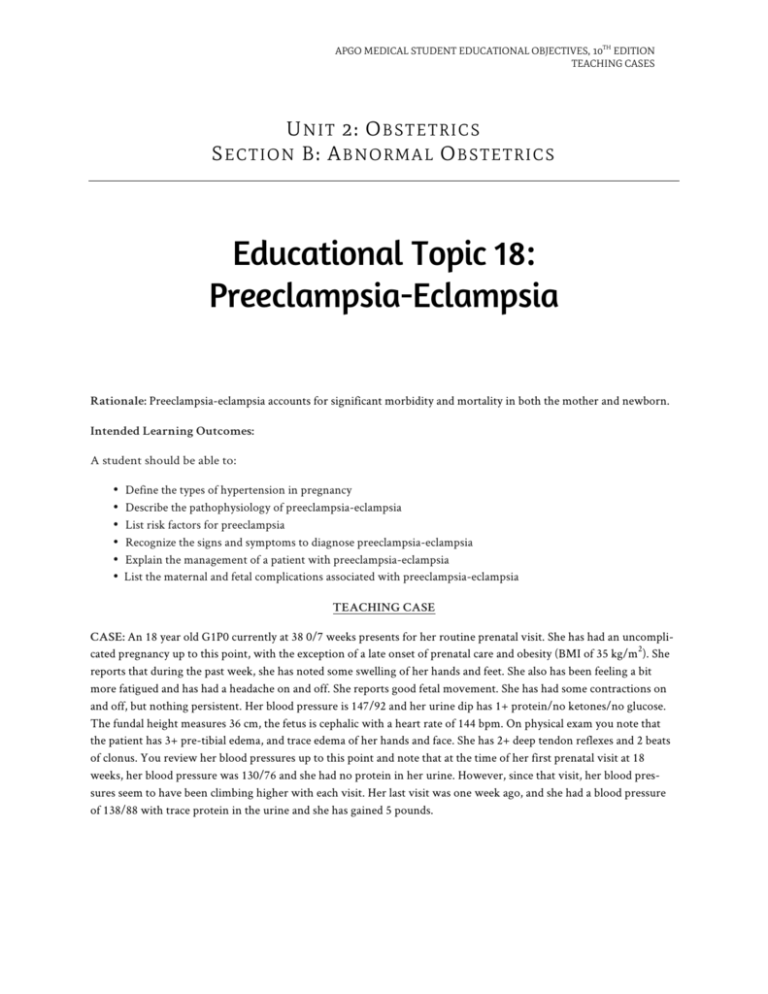
TH APGO MEDICAL STUDENT EDUCATIONAL OBJECTIVES, 10 EDITION TEACHING CASES U N I T 2: O B S T E T R I C S SECTION B: ABNORMAL OBSTETRICS Educational Topic 18: Preeclampsia-Eclampsia Rationale: Preeclampsia-eclampsia accounts for significant morbidity and mortality in both the mother and newborn. Intended Learning Outcomes: A student should be able to: • • • • • • Define the types of hypertension in pregnancy Describe the pathophysiology of preeclampsia-eclampsia List risk factors for preeclampsia Recognize the signs and symptoms to diagnose preeclampsia-eclampsia Explain the management of a patient with preeclampsia-eclampsia List the maternal and fetal complications associated with preeclampsia-eclampsia TEACHING CASE CASE: An 18 year old G1P0 currently at 38 0/7 weeks presents for her routine prenatal visit. She has had an uncompli2 cated pregnancy up to this point, with the exception of a late onset of prenatal care and obesity (BMI of 35 kg/m ). She reports that during the past week, she has noted some swelling of her hands and feet. She also has been feeling a bit more fatigued and has had a headache on and off. She reports good fetal movement. She has had some contractions on and off, but nothing persistent. Her blood pressure is 147/92 and her urine dip has 1+ protein/no ketones/no glucose. The fundal height measures 36 cm, the fetus is cephalic with a heart rate of 144 bpm. On physical exam you note that the patient has 3+ pre-tibial edema, and trace edema of her hands and face. She has 2+ deep tendon reflexes and 2 beats of clonus. You review her blood pressures up to this point and note that at the time of her first prenatal visit at 18 weeks, her blood pressure was 130/76 and she had no protein in her urine. However, since that visit, her blood pressures seem to have been climbing higher with each visit. Her last visit was one week ago, and she had a blood pressure of 138/88 with trace protein in the urine and she has gained 5 pounds. TH APGO MEDICAL STUDENT EDUCATIONAL OBJECTIVES, 10 EDITION TEACHING CASES COMPETENCY-BASED DISCUSSION & KEY TEACHING POINTS: Competencies addressed: • Patient care • • Medical Knowledge System-Based Practice 1. What is considered a hypertensive blood pressure during pregnancy? 2. What types of hypertensive syndromes can occur during pregnancy? 3. How does the physiology of preeclampsia lead to the clinical symptoms and findings? 4. What are the laboratory findings that support a diagnosis of preeclampsia-eclampsia syndrome? 5. What types of maternal and fetal complications are associated with preclampsia-eclampsia syndrome? REFERENCES Beckman CRB, et al. Obstetrics and Gynecology. 7th ed. Philadelphia: Lippincott, Williams & Wilkins, 2013. Hacker NF, Moore JG, et al. Essentials of Obstetrics and Gynecology. 5th ed. Philadelphia: Saunders, 2010. Sibai B. Diagnosis and Management of Gestational Hypertension and Preeclampsia. ObstetGynecol. High-Risk Pregnancy Series: An Expert's View. Jul 2003; (102) 1 - p 181-192. Lain KY, Roberts JM. Contemporary concepts of the pathogenesis and management of preeclampsia. JAMA. Jun 26 2002; 287(24):3183-6. Copyright © 2014 by Association of Professors of Gynecology and Obstetrics (APGO). For permissions: apgoadmin@apgo.org
